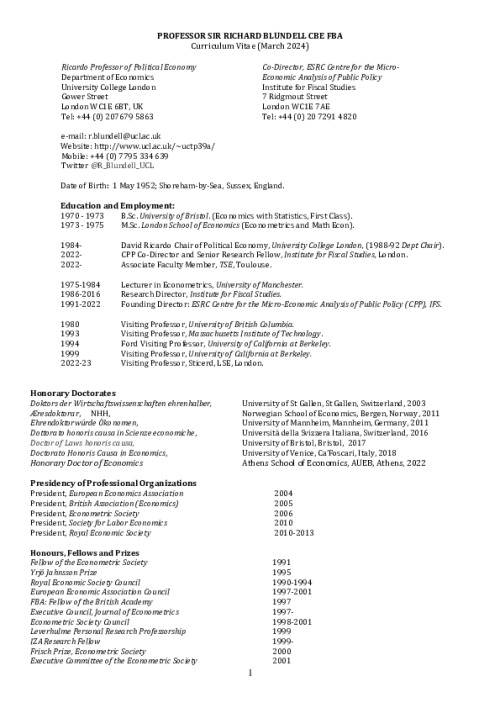Professor Sir Richard Blundell
CPP Co-Director
Richard is a Co- Director of the ESRC Centre for the Microeconomic Analysis of Public Policy (CPP) and a Senior Research Fellow at IFS. He holds the David Ricardo Chair of Political Economy at University College London. A graduate of the University of Bristol and London School of Economics. From 1986 until 2016 he was Research Director of the Institute for Fiscal Studies (IFS). He has held visiting professor positions at UBC, MIT and Berkeley. He holds Honorary Doctorates from the University of St.Gallen, Switzerland; the Norwegian School of Economics, NHH, Bergen, Norway; the University of Mannheim, Mannheim; the University of Bristol; and the and the University of Venice Ca’Foscari. He was awarded a CBE in the Queen's New Year's Honours List 2006 and a Knighthood in 2014 for services to Economics and Social Science.
In 1995 he was awarded the Yrjö Jahnsson Prize for his work in microeconometrics and the analysis of labour supply, welfare reform and consumer behaviour. In 2000 he was awarded the Econometric Society Frisch Prize Medal for his paper 'Estimating Labour Supply Responses using Tax Reforms'. In 2008 he was the recipient of the Jean-Jacques Laffont Prize given to a high level economist whose research combines both the theoretical and applied aspects of economics. He was awarded the CES-Ifo Prize in 2010 and the Sandmo Prize in 2011. He was recipient of the IZA Prize in Labor Economics in 2012. He was awarded the 2015 BBVA Foundation Frontiers of Knowledge Prize in Economics. In 2017, he received the Nemmers Prize in Economics. In 2004 he was President of the European Economics Association. He was President of the Econometric Society in 2006. He was President of the Society of Labor Economics in 2010. He was President of the Royal Economic Society 2011-2013. He is a Fellow of the Econometric Society, Fellow of the British Academy, Honorary Member of the American Economic Association and Honorary Member American Academy of Arts and Science






